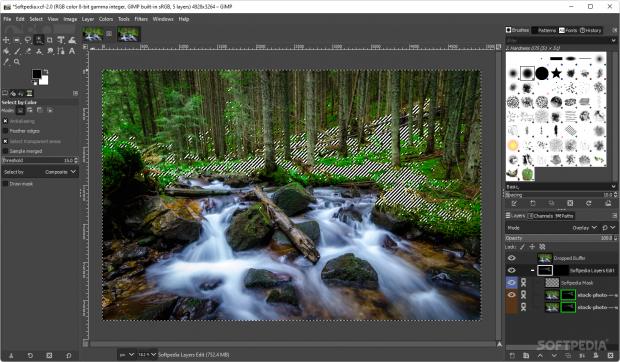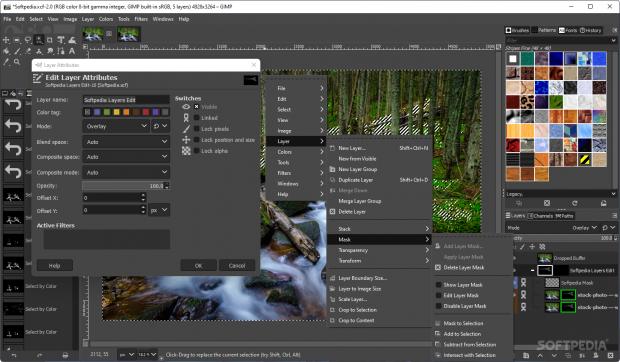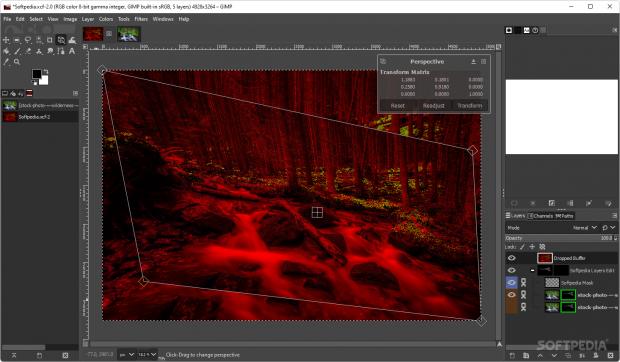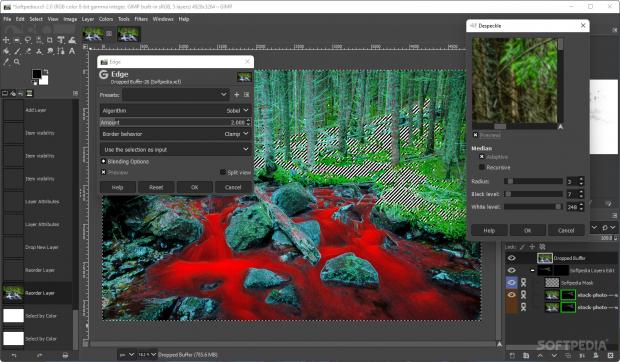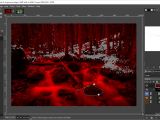Graphics editors have come a long way, and their evolution has seen many leaps in capabilities, in accordance with the increasing demands that stemmed from the latest camera gear and associated image processing techniques. To this day, many users still rely on the tried-and-tested functionality of Adobe’s Photoshop image editor, and for good reason: it has offered reliable performance, again and again.
However, does GIMP, one of its strong alternatives out there, still have a word to say? Given its scope and capabilities, it’s a popular choice among those seeking for a free solution that can provide similar performance.
Provides a customizable interface, which can yield workflow consistency
All those endowed with the gift of photography know that at some point in their production workflow, the structure and characteristics of their tools will need to be completely adapted to their specific requirements. The same goes with the associated image processing software, and GIMP packs a very customizable interface, which can offer an impressive efficiency increase when adjusted accordingly.
Although this might not be a novelty in graphics editors these days, quite the contrary it's a staple feature, it’s never wrong to overstate its importance. The fact that you will be able to adjust on-screen controls, move around panels and choose the way in which features alter the app’s overall behavior will mean that in the end, you’ll be enjoying the editing experience and be more productive.
Offers accessible functionality through its range of commonly used editing features, but lacks several photography-specific tools
It’s hard to talk about the functionality of the onboard editing tools and features without making a direct comparison with the industry benchmark set by Photoshop. However, we were pleasantly surprised to see similar levels of functionality and accessibility in GIMP.
The essential editing features, for both photography and other graphics-related tasks, are present and highly accessible, through numerous paths. Layering is addressed, selection tools, color management, filters, and much more. However, coming from a Photoshop background, some features might take some getting used to, in terms of their place and functional representation.
Furthermore, the lack of features such as CMYK processing for image printing, as well as not having a dedicated photography module, which is just a singular example, can deter some advanced users from relying on GIMP.
Open-source means that you’ll be able to go one step beyond and perform actual code tweaks in order to achieve a truly adapted experience
Addressing the elephant in the room, and it’s easy to see that one of the highlights of GIMP, is, of course, its open-source nature. Aside from the actual licensing implications, the direct translation of that is that you’ll be able, if possessing the knowledge and will, to perform actual code tweaks.
Why is this so important? Well, if you take your photography and image processing seriously, you will almost certainly wish to tweak and squeeze every last drop of functionality out of your graphics editor. And what better way to do so than to actually perform changes in the intrinsic elements that constitute the app’s governing parameters. This is where we feel that truly demanding users might benefit from choosing GIMP instead of Adobe, as Photoshop does not allow for such consequential alterations.
More than capable configurator module, offering pretty standard settings: nothing new there
No amount of functionality will make up for a well-thought-out configurator, and fortunately, you will be able to access and adjust a wide range of parameters. However, when assessing this aspect from a cold, objective point of view, we weren’t able to identify any stand out, innovative elements.
This observation, however, does not mandate that one should choose other graphics editors over it. Simply put, the aspects that are addressed in GIMP’s “Preferences” section are pretty standard, and don’t contribute to its advantage.
Performance and overall feel are right on par with Photoshop, but the latter might have a slight upper edge
In the end, at the level at which such graphics suites operate, one might argue the objective reasons for choosing one software over another. However, if you’re an experienced photographer or designer, whose share of portfolio of projects spans across many years, you will be able to sense slight differences.
These exact details, although subjective at times, will make you want to choose Photoshop. Starting from the way in which data is stored and handled to the actual editing and the behavior of its tools and features, and all the way to the lack of compatibility with other Adobe products when dealing with endeavors that surpass the purposes of just photography, GIMP can, at times, feel strange and suboptimal in performance.
However, if you’re someone who might be just getting into image processing, and who’s not yet ready to invest in a lifetime license or a monthly subscription, the onboard capabilities of this application can far surpass the needs of the average image editing tasks. Even more, when coming into contact with GIMP for the first time, without prior experience with other graphics editors, its overall demeanor and characteristics will be much easier to assimilate and learn, consequently resulting in efficient processing.
The Good
The Bad
There are numerous aspects that substantiate this suboptimal performance, and aside from the obvious lack of photography-specific features addressing printing and others, there are those which will be more than likely sensed by seasoned photographers and designers, which pertain to the overall handling and awkwardness of some procedures.
The Truth
Despite the slight edge of its direct competitor, Photoshop, it still manages to pack a punch, and in all fairness, can prove to be a reliable tool, especially for those seeking a free alternative.
 14 DAY TRIAL //
14 DAY TRIAL // 